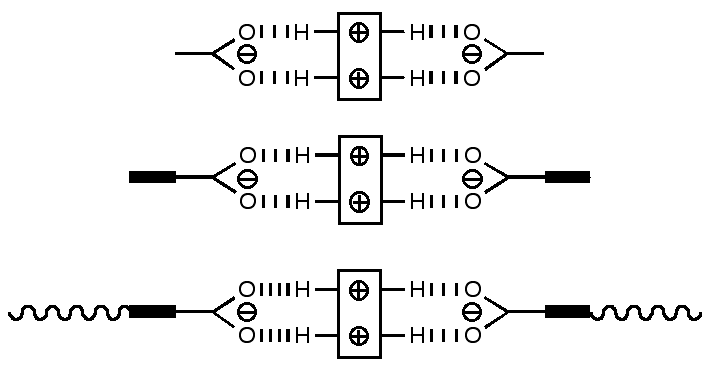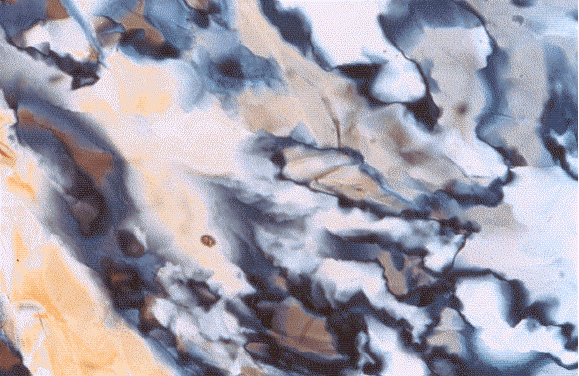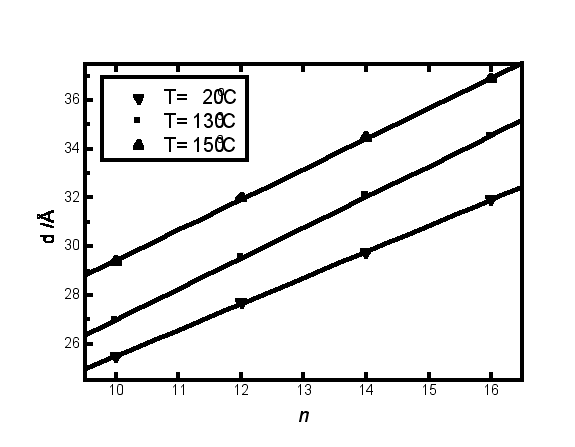Résumés Année 2004
"Reflexion on Molecular Tectonics"
M. W. HOSSEINI, Cryst. Eng. Comm., 2004, 6, 318-322. (download .pdf)
Abstract : Molecular crystals are solid and periodic materials. These entities may be regarded as supramolecular architectures and thus to be described as molecular networks, which are infinite molecular assemblies possessing translational symmetry and composed of complementary or self-complementary tectons capable of mutual interactions. This way of analysing structural features of crystalline materials called molecular tectonics not only permits crystals to be described as supramolecular architectures generated through molecular recognition processes but also allows molecular networks to conceived with predicted connectivity and thus dimensionality through the design of tectons. A formal description and analysis of molecular networks is given.
 |  |  |
"Molecular Tectonics: Design of Luminescent H-Bonded Molecular networks"
C. PARASCHIV, S. FERLAY, M. W. HOSSEINI, V. BULACH, J.-M. PLANEIX, Chem. Comm., 2004, 2270-2271. (download .pdf)
Abstract : Using bis-amidinium dications as tetra H-bond donor tectons and Au(CN)2- anion, neutral 1-D networks based on bis monohapto mode of H-bonding are obtained. Owing to the short metal-metal distance within the network, luminescent crystals are obtained. The emission phenomena may be tuned by the nature of the spacer connecting the two cyclic amidinium groups.
 |  |  |
"Molecular tectonics : geometry and energy based analysis of coordination networks"
M. HENRY, M. W. HOSSEINI, New J. Chemistry, 2004, 28, 897-906.(download .pdf)
Abstract : The combination of the bis-monodentate tecton 1 based on the fluorene skeleton and bearing two pyridine units as coordinating sites with HgCl2 acting as a metallatecton leads to a 1-D coordination network in the crystalline phase as demonstrated by X-ray diffraction on single crystal. When only considering geometrical features of the organic and metallic tectons, the generation of the network may be described as resulting from interconnection through Cl-Hg interactions of consecutive metallamacrocycles formed between two tectons 1 and two HgCl2 complexes. However, the energy based analysis of the solid using the PACHA algorithm reveals that the bridging (Hg-Cl-Hg) process participates only for 19 % of the overall energy whereas the p-p interaction between fluorene units contributes up to 60 %. Thus, when taking into account both m-bridging process and p-p interactions, the overall system may be described as a 2-D hybrid metallo-organic network.
 |  |  |
"Crystalline Molecular Alloys"
S. FERLAY, M. W. HOSSEINI, N. KYRITSAKAS, Chem. Comm, 2004, 787-788. (download .pdf)
Abstract: The dicationic tecton 1-2H+ leads in the presence of anionic M(CN)63- complexes to two almost identical crystalline systems A ((M = Fe) and B (M = Co) composed of 2-D H-bonded networks and water molecules. The epitaxial growth of B on A used as seed or A on B generates crystalline molecular alloys.
 |  |  |
"Design and structural analysis of metallamacrocycles based on a combination of ethyleneglycol bearing pyridine units with zinc, cobalt and mercury"
P. GROSSHANS, A. JOUAITI, V. BULACH, J.-M. PLANEIX, M. W. HOSSEINI, N. KYRITSAKAS, Eur. J. I.norg Chem. 2004, 453-458. (download .pdf)
Abstract: The ligand 1, based on the ethylene glycol fragment bearing two pyridine units as monodentate coordination sites leads in the presence of MX2 (M = Zn, Hg, Co, X = Cl or I) complexes to isostructural square shape neutral metallamacrocycles with a M/L ratio of 2/2 as demonstrated by X-ray diffraction on single crystals. For all binuclear complexes generated, the dicationic metal centre adopts a distorted tetrahedral coordination geometry and its coordination sphere is composed of the (X2N2) set of coordinating atoms. For all complexes the parallel packing of cyclic structures generates channels which are occupied by solvent molecules. The solvent molecules behaving as substrates are positioned within the cavity of metallamacrocycles. The control of the dimension of the macrocycles by the size of the connecting metal centre has been also demonstrated.
 |  |  |
"Molecular tectonics : Design and structural analysis of enantiomerically pure tectons and helical coordination networks"
P. GROSSHANS, A. JOUAITI, V. BULACH, J.-M. PLANEIX, M. W. HOSSEINI, J.-F. NICOUD, C. R. Chimie. 2004, 7, 189-196.(download .pdf)
Abstract: The synthesis of the four new enantiomerically pure coordinating tectons based on isomannide or isosorbide backbone bearing two pyridine units as coordination sites was achieved and their structure analysed by X-ray diffraction on single crystals.
The junction between the pyridine units, connected to the sugar moieties at either position 3 or 4, was achieved by ester groups. Under self-assembly conditions, a mixture of the tecton based on isomannide bearing two nicotinoyl groups and HgCl2 generates in the crystalline phase a enantiomerically pure single stranded helical assembly. As demonstrated by X-ray diffraction on single crystal, the infinite directional coordination networks are packed in the syn-parallel fashion leading thus to a polar crystal.
 |  |  |
"Molecular networks forming crystalline and liquid crystalline phases by combined hydrogen bonding and ionic interactions"
M. W. HOSSEINI, D. TSIOURVAS, J.-M. PLANEIX, Z. SIDERATOU, N. THOMAS, C. M. PALEOS, Collec. Czech. Chem. Comm., 2004, 69, 1161-1168. (download .pdf)
Abstract: Molecular recognition of cyclic bisamidinium dication with a series of 4-n-alkoxybenzoates afforded materials exhibiting lamellar crystalline structures at low temperatures and highly ordered smectic phases at higher temperatures. The liquid crystalline behaviour was investigated by differential scanning calorimetry, polarized optical microscopy and established by X-ray diffraction. Combined hydrogen bonding and ionic interactions resulted in supramolecular networks which have sufficient stability to maintain their structure at high temperatures following the melting of the long alkyl chains.
 |  |  |


